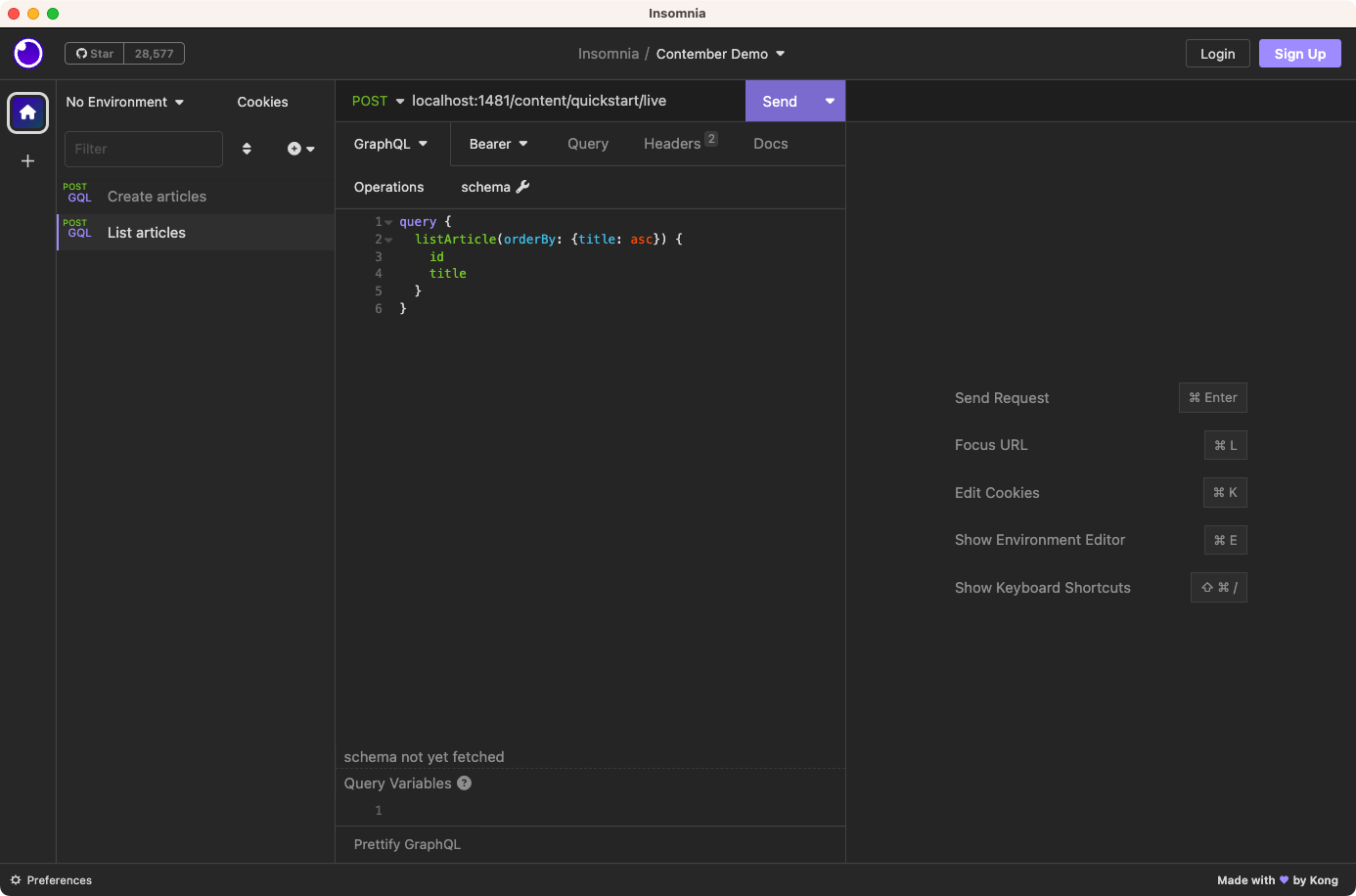Data handling with GraphQL
GraphQL is a query language for APIs and a runtime for executing those queries with your existing data. It's designed to give the client the power to ask for exactly what they need and nothing more.
Here's why we think GraphQL is great:
-
Precise Data Fetching: With GraphQL, you can specify exactly what data you need, which can significantly decrease the amount of data being transferred over the network and speed up your applications.
-
Single Request: Unlike traditional REST APIs where you might need to make multiple requests to different endpoints to gather related data, GraphQL allows you to gather that same data in a single request.
-
Type Safety: GraphQL schemas are strongly typed. This means each level of your query has a specific type associated with it, which helps eliminate errors and bugs that are typically harder to find.
-
Evolving API: GraphQL can be version-free, meaning it is easy to add fields and types to your API without breaking existing queries.
In this section of the tutorial, we will cover the basics of working with GraphQL within your Contember project, helping you understand how to fetch and manipulate data efficiently.
Content and Tenant GraphQL APIs
Contember offers two distinct APIs: the Content API for managing and accessing your project's content, and the Tenant API for handling projects, tokens, users, and roles.
Content API
The Content API, a GraphQL API, is tailored to the structure of your project's content. It's available at the URL formatted as https://engine-hostname/content/{project}/{stage}, for example, http://localhost:1481/content/my-blog/live. Access requires an access token with adequate permissions, obtained from the Tenant API. This token, appearing something like 44d7dd8ae4a45c33eaa309716e41e1a8476cda4f, should be passed in the Authorization header as a Bearer token.
The Content API's GraphQL schema respects your project's ACL rules, meaning it will only include types, fields, and mutations permissible for the user linked to the access token. For instance, a read-only role for a mobile app would result in the API excluding all mutations for this role.
Each entity allows for 3 types of queries (get, list, paginate) and for 4 mutations (create, update, delete, upsert).
get for fetching single records by a unique field
query {
getPost(by: { id: "c4ae3a0f-d91b-42a8-ad3c-5ca6b9f407c2" }) {
title
publishedAt
}
}
list for a straightforward list
query {
listPost(
filter: {
publishedAt: { lte: "2019-12-20" }
category: { name: { eq: "Graphql" } }
}
orderBy: [{ publishedAt: asc }]
limit: 10
) {
title
publishedAt
}
}
paginate for Relay-style pagination.
query {
paginatePost(
skip: 1
first: 2
filter: { author: { name: { eq: "John Doe" } } }
orderBy: [{ publishedAt: asc }]
) {
pageInfo {
totalCount
}
edges {
node {
id
title
author {
name
}
}
}
}
}
create mutation to create new records.
mutation {
createPost(data: {title: "Hello world", publishedAt: "2019-12-20"}) {
ok
node {
id
}
}
}
update mutation to change existing record
mutation {
updatePost(
by: {id: "97644abb-0671-486b-9c51-b72b377ec1d9"}
data: {title: "Hello Contember"}
) {
ok
node {
id
}
}
}
delete mutation to delete records
mutation {
deletePost(
by: {id: "97644abb-0671-486b-9c51-b72b377ec1d9"}
) {
ok
node {
title
}
}
}
upsert mutation to update an existing row or a create a new one when the requested row does not exist
mutation {
upsertPost(
by: {slug: "hello-contember"}
create: {title: "Hello Contember"}
update: {title: "Hello Contember again!"}
) {
ok
node {
id
}
}
}
The get query requires a by parameter for filtering by a primary column or any unique columns, while list provides options such as complex condition filtering, result ordering, and paging via a limit and offset.
For a more in-depth look at the Content API, here are some advanced resources:
Tenant API
The Tenant API, accessible via the URL https://engine-hostname/tenant, necessitates a Bearer token in the Authorization header.
The Tenant API facilitates user logins and registrations, membership management, and more. This basic guide won't cover this, but if you'd like to, here are the sources.
Querying the Content API
For this part we assume that you already have a Contember project with your data model running on your machine.
You can interact with GraphQL API anywhere. But for basic exploring we suggest using the Insomnia application. If you created a project in previous step, here's an Insomnia project for quick exploration Just download the project and import it into Insomnia by creating new collection and in Export/Import choose Import and choose the file you just downloaded.

Try creating a few articles with the Create Articles mutation and then list them with the List Articles query.
Now let's build the UI for our data.